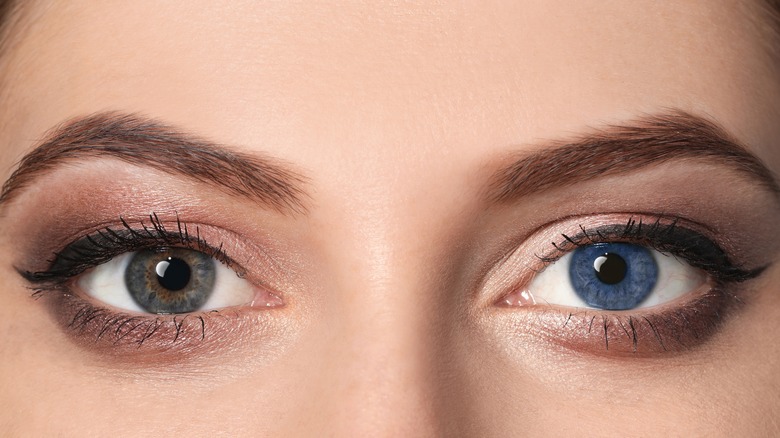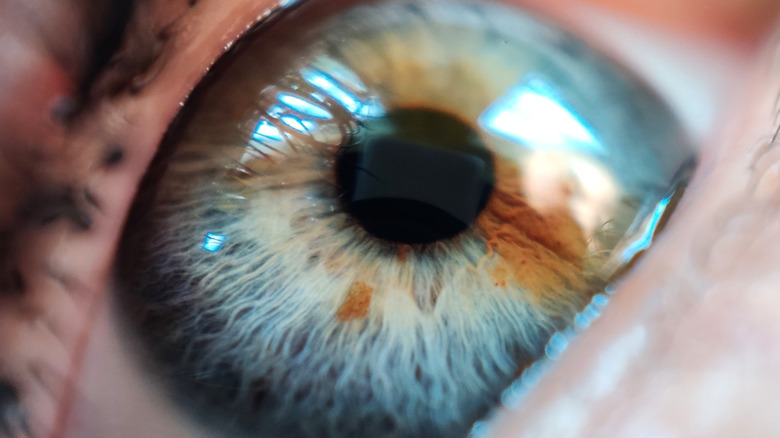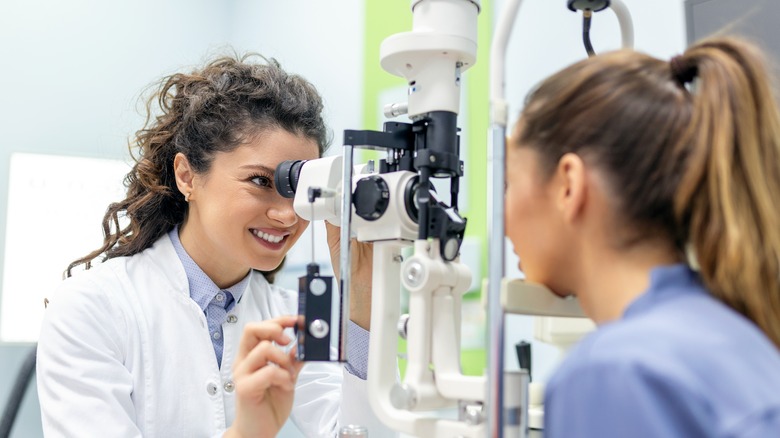Is It Rare To Have Different Colored Eyes?
According to King's College London ophthalmologist Pirro Hysi, who was involved in a study focused on eye color and genetics, the color of our eyes is "one of the most striking features of the human face," (via Discover magazine). Hysi's observation isn't exactly far-fetched either. How many times have you commented on someone's eye color, especially if you're meeting them for the first time and immediately noticed something unique about their irises?
The study of eye color has had an interesting trajectory with humans only beginning to understand the complex nature of why certain irises are the shade they are in more recent years. The color of your eyes is influenced by melanin found in the iris, and there are broadly six different eye colors present in the world, brown being the most common of all of them, according to Eye Doctors of Washington. Other eye colors include blue, hazel, and green.
And then there are those who have two different colored eyes. Known as heterochromia, this is a condition where one individual has two different hues of irises, as Health Jade confirms. But just how common is it?
It is considered rare to have heterochromia
Heterochromia is a rare body feature that most people don't have. In fact, it's said to affect less than 1% of people, according to Essilor. In the U.S., the prevalence is reportedly less than 200,000 people (via Health Jade). However, you may have noticed that some of your favorite celebrities such as Mila Kunis, Kate Bosworth, and Jane Seymour have heterochromia as well, as All About Vision notes.
Heterochromia is generally inherited (a genetic mutation is the culprit) but there are rarer cases where people develop different eye colors later in life, too, because of health conditions such as Horner's syndrome, piebaldism, and Waardenburg syndrome. The former is called congenital heterochromia and the latter is known as acquired heterochromia. Acquired heterochromia can also occur because of diabetes, eye surgery, eye trauma, tumors, uveitis, glaucoma, and even due to taking certain medications to treat glaucoma.
Heterochromia typically presents in three different ways; complete, central, and sectoral heterochromia. Complete heterochromia, the rarer kind, is when a person has two different iris colors. When someone's iris is one hue close to the pupil and another at the edge (in both eyes), this is what's called central heterochromia. Finally, sectoral heterochromia occurs when a person has two different sections of irises that are of two different colors.
Is having different colored eyes harmful?
While the genetically acquired condition itself is harmless, if medical professionals suspect there's an underlying illness, medication, or injury that could be causing heterochromia, then there is cause for concern (via the American Academy of Ophthalmology). When someone experiences trauma to their eyes because of a surgical procedure, for instance, this could lead to bleeding which may cause a change in hue, per N Vision.
A condition like uveitis — which is essentially a swelling and inflammation in the eye — could also affect a color change. An ophthalmologist will examine the eyes and suggest treatment for the other issues that could be causing the different eye colors, but the heterochromia itself requires no treatment, according to the American Academy of Ophthalmology. If you are self-conscious and wish to have the same eye color in both eyes, you could opt to wear contact lenses, as All About Vision advises.
If you wish to stand out with a rare feature, then you can embrace it as well. Heterochromia in itself does not affect one's quality of vision, although the same cannot be said of many underlying conditions that could be causing the pigment change, as the Miami Contact Lens Institute warns. However, if you've had similar shades of irises for as long as you can remember and notice a change in them over time, you may want to visit an ophthalmologist and get your eyes checked just in case.


